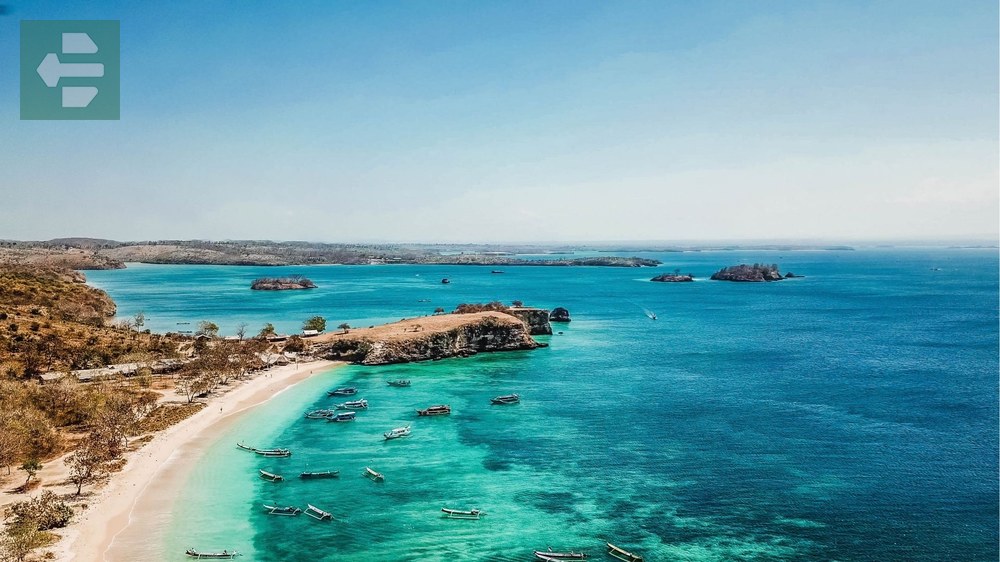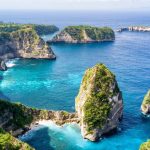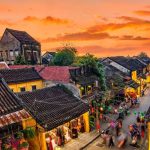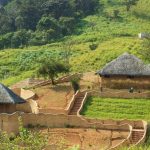Indonesia stretches across 17,000 islands, offering everything from ancient temples to active volcanoes and pristine coral reefs. The best places to visit include Bali Island, Borobudur Temple, Mount Bromo, and Raja Ampat. Other standout destinations are Komodo National Park, Lake Toba, and the Gili Islands.
Keep reading as we explore the best places to visit in Indonesia that will transform your understanding of Southeast Asia's most diverse archipelago.
List of Contents
- 1. Bali Island: More Than Paradise
- 2. Borobudur Temple: Stone Prayers at Dawn
- 3. Mount Bromo: Moonscape at Sunrise
- 4. Yogyakarta: Java's Cultural Heart
- 5. Ijen Crater: Blue Fire in Darkness
- 6. Lombok Island: Bali's Quieter Sister
- 7. Gili Islands: Three Dots of Paradise
- 8. Raja Ampat: Earth's Richest Reefs
- 9. Komodo National Park: Dragons and Pink Beaches
- 10. Flores Island: Volcanic Spine Beauty
- 11. Lake Toba: Sumatra's Volcanic Giant
- 12. Tana Toraja: Land of Elaborate Farewells
- 13. Tanjung Puting National Park: Orangutan Sanctuary
- 14. Prambanan Temple: Hindu Masterpiece
1. Bali Island: More Than Paradise
Bali delivers what postcards promise, then surprises you with substance. Rice terraces cascade down volcanic slopes in Jatiluwih, while ancient temples perch on clifftops in Uluwatu.
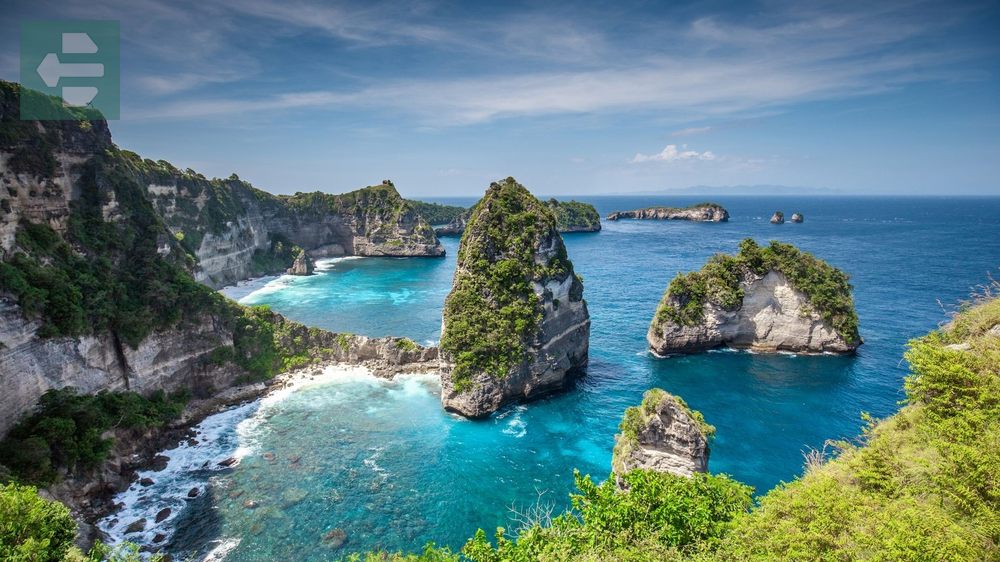
The island's soul lives in its ceremonies. You'll hear gamelan music drifting from village temples at dusk, see offerings of frangipani flowers on every doorstep. Stay away from Kuta's crowds—head to Ubud for culture or Canggu for authentic surf breaks.
I learned to appreciate Bali's rhythm during a ceremony in Tenganan village, where time moves differently and tradition still guides daily life.
Quick Facts:
- Peak Season: July-August, December-January
- Getting There: Ngurah Rai International Airport
- Entry Fee: From $35 tourist tax
- Suggested Stay: 5-7 days
- Must-See Areas: Ubud, Uluwatu, Seminyak, Sanur, Canggu
2. Borobudur Temple: Stone Prayers at Dawn
Built in the 8th century, Borobudur rises from Java's plains like a mountain made of carved stories. This Buddhist monument contains 2,672 relief panels and 504 Buddha statues, each telling part of humanity's spiritual journey.

Sunrise here transforms stone into gold. The temple opens at 4:30 AM for sunrise visitors—arrive early and climb to the top levels before crowds gather. The view over surrounding volcanoes makes the early wake-up worthwhile.
Local guides know which panels tell the most compelling stories. Let them show you details you'd otherwise miss.
Quick Facts:
- Peak Season: July-August
- Getting There: 1 hour from Yogyakarta
- Entry Fee: From $25
- Suggested Stay: 1-2 days
- Must-See Areas: Main temple, Pawon Temple, Mendut Temple
3. Mount Bromo: Moonscape at Sunrise
Bromo's caldera stretches like another planet. This active volcano sits inside a larger crater, surrounded by a sea of volcanic sand that crunches beneath your feet.

The classic viewpoint at Penanjakan offers the iconic sunrise shot, but the real magic happens inside the crater itself. You can walk right up to Bromo's smoking rim—the sulfur smell hits you before you see the glowing crater.
Hire a local jeep driver for the pre-dawn journey. They know shortcuts through the sand sea that tourist buses can't navigate.
Quick Facts:
- Peak Season: April-October
- Getting There: Malang or Probolinggo airports
- Entry Fee: From $3
- Suggested Stay: 2-3 days
- Must-See Areas: Penanjakan viewpoint, Bromo crater, Whispering Sands
4. Yogyakarta: Java's Cultural Heart
Yogya, as locals call it, preserves Indonesian culture while embracing change. The Sultan's palace still functions as a royal court, complete with traditional ceremonies and gamelan orchestras.
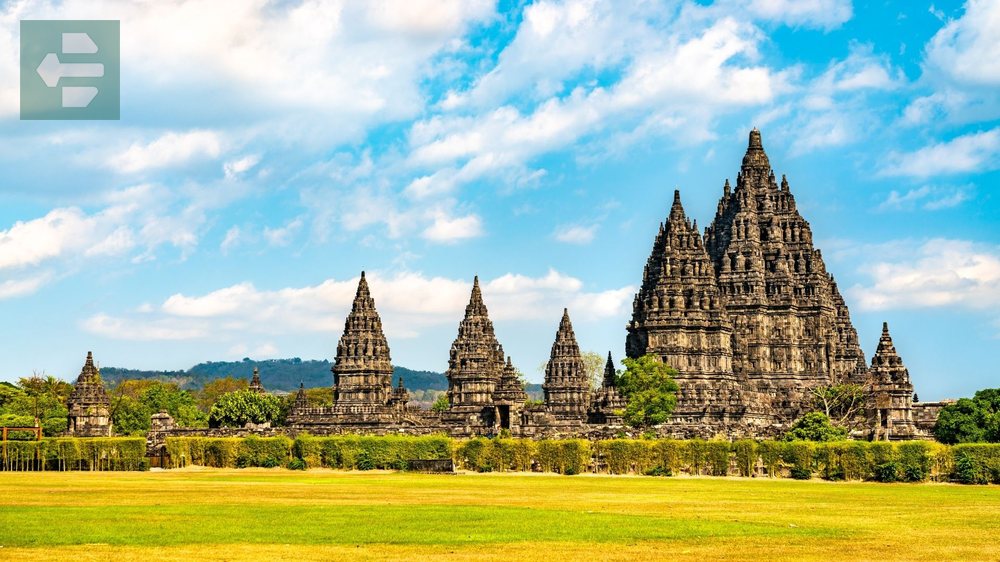
Street food here reaches art form status. Jalan Malioboro buzzes with food carts serving gudeg—a sweet jackfruit curry that defines the city's flavor. The vendors there have perfected their recipes across generations.
You have to experience a shadow puppet performance at least once. The stories stretch deep into Javanese mythology and can last all night.
Quick Facts:
- Peak Season: May-September
- Getting There: Yogyakarta Airport
- Entry Fee: Varies by attraction
- Suggested Stay: 3-4 days
- Must-See Areas: Kraton Palace, Taman Sari, Jalan Malioboro, Silver Quarter
5. Ijen Crater: Blue Fire in Darkness
Ijen's blue flames burn in complete darkness—a phenomenon so rare that photographers travel across continents to witness it. The sulfur mine here produces electric blue fire that's visible only before dawn.

The hike starts at 2 AM and takes two hours to reach the crater rim. Bring a gas mask—the sulfur fumes can overwhelm unprepared visitors. The turquoise crater lake below looks deceptively peaceful from above.
Miners here carry 70-kilogram sulfur loads up the crater walls daily. Their strength humbles even seasoned hikers.
Quick Facts:
- Peak Season: April-October
- Getting There: Banyuwangi Airport, then 1.5 hours
- Entry Fee: From $5
- Suggested Stay: 1-2 days
- Must-See Areas: Crater rim, sulfur mines, blue fire viewpoint
6. Lombok Island: Bali's Quieter Sister
Lombok offers Bali's beauty without the crowds. Mount Rinjani dominates the island's center, while pristine beaches ring the coastline. Traditional Sasak villages dot the landscape, preserving customs unchanged for centuries.
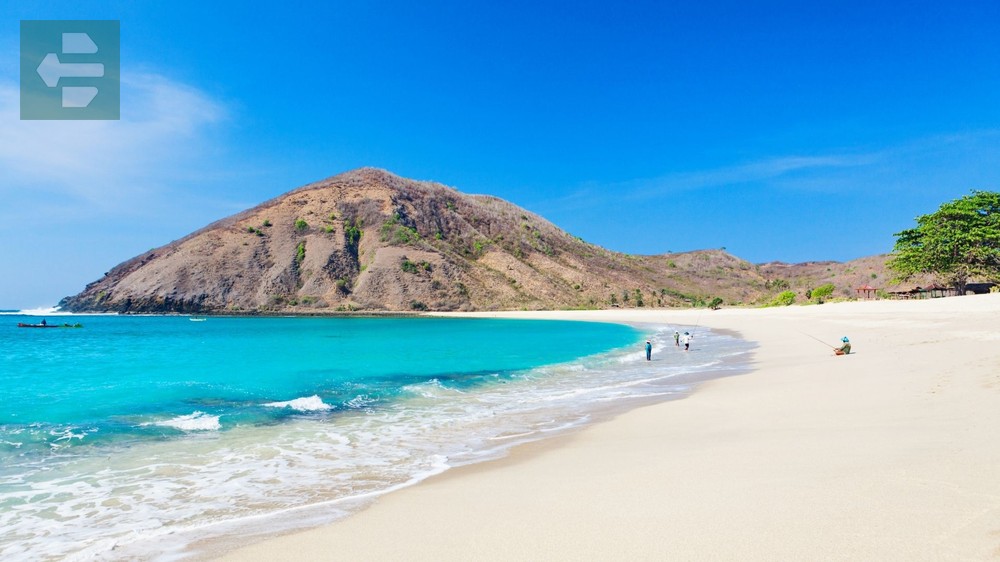
The three-day Rinjani trek challenges even experienced hikers, but the crater lake vista rewards every difficult step. Alternatively, southern beaches like Kuta Lombok provide perfect surf breaks and white sand.
I discovered Lombok's charm in a small warung in Senggigi, where the owner taught me to properly eat gado-gado while waves crashed outside.
Quick Facts:
- Peak Season: May-September
- Getting There: Lombok International Airport
- Entry Fee: Free (varies by activity)
- Suggested Stay: 4-5 days
- Must-See Areas: Mount Rinjani, Kuta Lombok, Senggigi, Sasak villages
7. Gili Islands: Three Dots of Paradise
Three small islands off Lombok's coast offer different vibes. Gili Trawangan pulses with backpacker energy, Gili Meno whispers romance, and Gili Air balances both moods perfectly.

No motorized vehicles exist on any Gili—only bicycles and horse carts. The pace slows immediately upon arrival. Snorkeling here reveals healthy coral gardens and curious sea turtles that swim alongside visitors.
Local boat builders still craft traditional outriggers by hand. Watch them work in late afternoon when the light turns everything golden.
Quick Facts:
- Peak Season: May-September
- Getting There: Fast boat from Bali or Lombok
- Entry Fee: From $2 local tax
- Suggested Stay: 3-4 days
- Must-See Areas: All three islands, Turtle Point, sunset spots
8. Raja Ampat: Earth's Richest Reefs
Raja Ampat contains more marine species than anywhere else on Earth. These four islands off West Papua harbor 1,500 fish species and 600 coral varieties. Diving here feels like swimming through a living kaleidoscope.
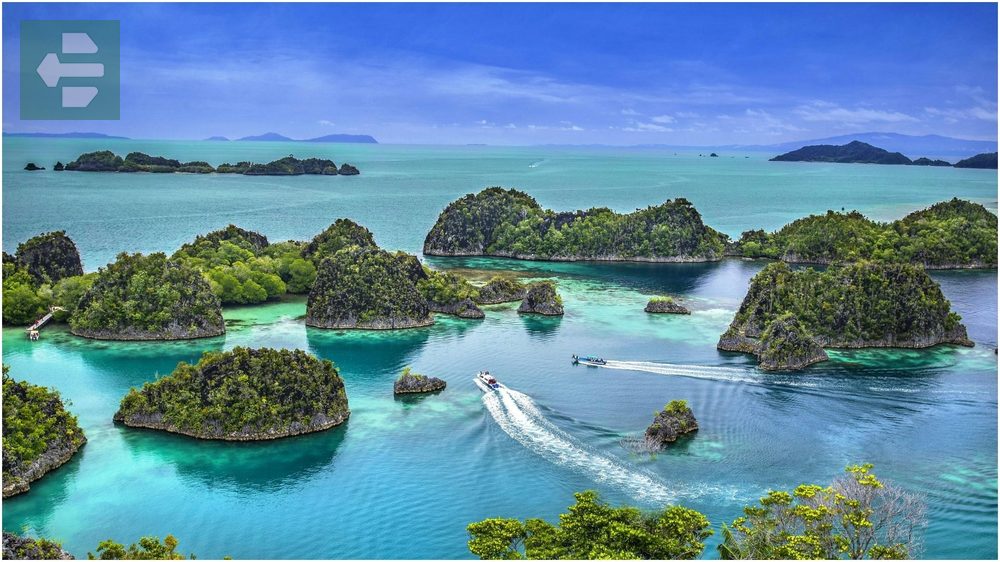
The remote location keeps crowds minimal—getting here requires commitment. Liveaboard boats offer the best access to pristine dive sites where manta rays gather in cleaning stations and walking sharks patrol shallow reefs.
Conservation efforts here show what's possible when communities protect their natural heritage. Local guides take genuine pride in sharing their underwater paradise.
Quick Facts:
- Peak Season: October-April
- Getting There: Sorong Airport, then boat transfer
- Entry Fee: From $15
- Suggested Stay: 7-10 days
- Must-See Areas: Arborek Island, Pianemo, Cape Kri, Sawandarek
9. Komodo National Park: Dragons and Pink Beaches
Komodo dragons—the world's largest lizards—rule these volcanic islands. Rangers guide visitors through dragon territory, where three-meter predators bask in morning sun and hunt wild boar.
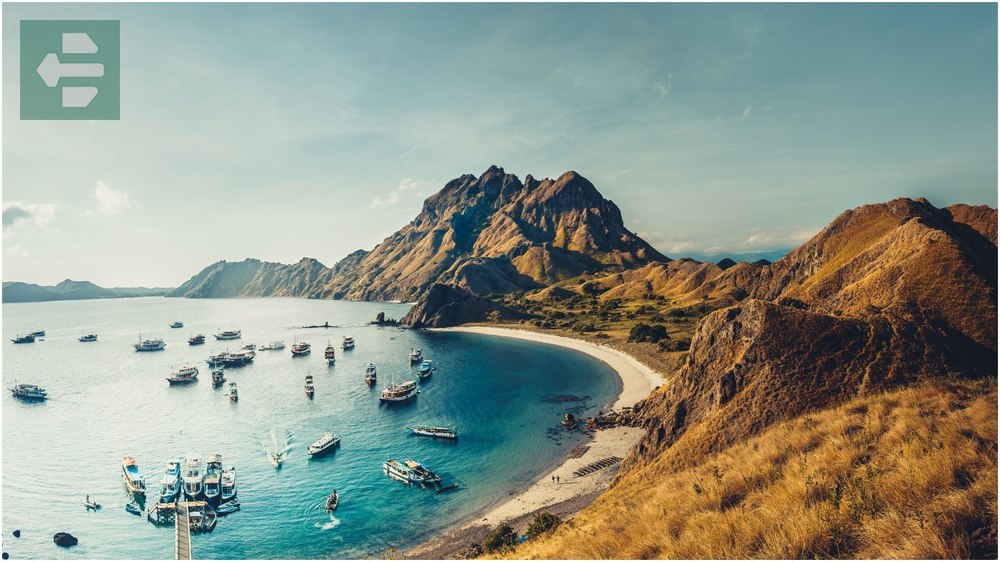
The park's pink beaches come from crushed red coral mixed with white sand. Komodo Island's Pink Beach offers excellent snorkeling, while Padar Island provides the classic three-bay viewpoint that defines Indonesian Instagram feeds.
Rangers here know each dragon individually. They'll show you which ones are pregnant, which are dominant, and how to stay safely upwind from their venomous bite.
Quick Facts:
- Peak Season: April-December
- Getting There: Labuan Bajo Airport
- Entry Fee: From $15
- Suggested Stay: 2-3 days
- Must-See Areas: Komodo Island, Rinca Island, Padar Island, Pink Beach
10. Flores Island: Volcanic Spine Beauty
Flores stretches like a dragon's backbone across the sea, with active volcanoes forming its spine. Kelimutu's three-colored crater lakes change hues unpredictably—sometimes turquoise and green, other times black and red.

Traditional villages here maintain ancient customs. In Wae Rebo, circular houses shelter entire families while mist drifts through surrounding mountains. The villagers welcome visitors who respect their traditions and quiet lifestyle.
The road across Flores challenges even experienced drivers, but every turn reveals new volcanic landscapes and traditional settlements.
Quick Facts:
- Peak Season: May-September
- Getting There: Ende or Maumere airports
- Entry Fee: Varies by site
- Suggested Stay: 4-5 days
- Must-See Areas: Kelimutu Lakes, Wae Rebo village, Bajawa
11. Lake Toba: Sumatra's Volcanic Giant
Lake Toba fills a supervolcano crater so massive it contains its own island. Samosir Island sits in the lake's center, home to Batak culture and traditional villages that maintain ancestral customs.

The lake stretches 100 kilometers long—larger than Singapore. Traditional Batak houses with their distinctive curved roofs dot Samosir's hills. Local families still perform ancient burial ceremonies and maintain elaborate family tombs.
Ferry rides across the lake take an hour, but the journey feels like traveling between different worlds as modern Medan fades into traditional Batak territory.
Quick Facts:
- Peak Season: June-September
- Getting There: Medan Airport, then 4-hour drive
- Entry Fee: From $2
- Suggested Stay: 2-3 days
- Must-See Areas: Samosir Island, Tomok village, Batak traditional houses
12. Tana Toraja: Land of Elaborate Farewells
Torajan culture revolves around elaborate funeral ceremonies that can last for days and cost families their life savings. Traditional tongkonan houses with their distinctive boat-shaped roofs guard ancient burial sites carved into cliff faces.

The ceremonies here celebrate life more than mourn death. Buffalo are sacrificed, families feast together, and the deceased are honored with pageantry that spans generations. Visitors who show proper respect are welcomed into these intimate cultural moments.
Torajan hospitality extends beyond ceremony. Families invite strangers to share meals and explain traditions that date back centuries.
Quick Facts:
- Peak Season: June-September
- Getting There: Makassar Airport, then 8-hour drive
- Entry Fee: Varies by ceremony
- Suggested Stay: 2-3 days
- Must-See Areas: Rantepao, Lemo cliff tombs, traditional villages
13. Tanjung Puting National Park: Orangutan Sanctuary
Tanjung Puting protects Borneo's remaining orangutan population in 400,000 hectares of pristine rainforest. Klotok riverboats navigate deep into the jungle, where feeding stations allow close encounters with these intelligent primates.

The park's rehabilitation program rescues orphaned orangutans and teaches them jungle survival skills. Watching young orangutans learn to build nests and find food connects visitors to our shared evolutionary history.
Night sounds in the park create nature's original soundtrack—proboscis monkeys calling, hornbills taking flight, and the occasional orangutan settling into treetop beds.
Quick Facts:
- Peak Season: May-September
- Getting There: Pangkalan Bun Airport
- Entry Fee: From $10
- Suggested Stay: 2-3 days
- Must-See Areas: Camp Leakey, Pondok Tanggui, Tanjung Harapan
14. Prambanan Temple: Hindu Masterpiece
Prambanan's nine temples reach skyward like stone prayers dedicated to Hindu gods. Built in the 9th century, this UNESCO World Heritage site showcases Javanese architectural mastery through intricate relief carvings and precise geometric proportions.

The central Shiva temple stands 47 meters tall, its walls covered in detailed scenes from the Ramayana epic. Evening performances of traditional Ramayana ballet use the temples as backdrop, bringing ancient stories to life.
Local artisans still carve stone using techniques unchanged since Prambanan's construction. Their workshops near the temple complex demonstrate skills passed down through thirty generations.
Quick Facts:
- Peak Season: May-September
- Getting There: 17 km from Yogyakarta
- Entry Fee: From $15
- Suggested Stay: Half day
- Must-See Areas: Shiva Temple, Brahma Temple, Vishnu Temple
Indonesia rewards curious travelers with experiences that challenge assumptions and create lasting memories. From Komodo dragons to ancient temples, from volcanic craters to pristine reefs, each destination offers something that can't be found elsewhere.
Your Indonesian adventure awaits—pack light, bring an open mind, and prepare for a country that will redefine your understanding of Southeast Asian travel. These fourteen destinations represent just the beginning of what this vast archipelago offers to those willing to explore beyond the obvious.
The best time to visit Indonesia is now, while many of these places remain relatively undiscovered by mass tourism. Each destination will leave you planning your return before you've even left.
